General information
Price (Based on one year):
Enrollment Fee: ¥50,000 (tax included) per person.
Tuition: ¥750,000 (tax included) per person.
First half: ¥500,000 , Second half: ¥300,000
Tools: ¥50,000 (tax included) per person.
You can choose your own schedule and can change your schedule after coming to Japan. If you are interested in this course, please email to discuss.
Includes:
1 Calligraphy starter kit
1 Large brush
1 Small brush
1 Ink stone
1 India ink stick
1 Bottle of ink
1 Felt pad
Washi Paper
Paperweight
1 Big scroll set
Practice paper
Hanging scroll frame (44cm x 180cm)
1 Hanko*
1 Postcard Set (1 Japanese brush pen and 5 blank postcards)
~all items can be taken home~
* Hanko is a red seal rubber stamp.
During this course you will make a…
Hanging scroll
Mini hanging scroll
Shikishi board
Sensu with kana characters
Seal engraved stamp
… and more!
Calligraphy Kyoto is the only calligraphy studio in Kyoto where you can receive direct guidance from a professional calligrapher.
This course is for people who want to learn the basics of calligraphy, are a little artistic, and have a longer stay in Kyoto. It is especially good for tourists seeking to experience authentic Japanese culture. Practicing meditation and mindfulness through calligraphy (Zen Calligraphy) is effective for unifying the mind.
This longer course is a very special experience as you need patience and stamina. This will be the coolest souvenir to represent your time in Kyoto!
About the Visa
For this course, a visa called the ‘cultural activities’ visa is necessary. I will help you apply for the visa however, we cannot guarantee that you will receive it. You may apply at any time.
Visa application fee: ¥33,000
1) Submit the required documents in your home country. And Calligraphy Kyoto will help you prepare the Japanese documents.
2) After arriving in Japan, please present your residence card and pay the tuition fee in full. In the unlikely event that you are unable to obtain a visa, we will refund your tuition fees.
3) Please prepare for outside expenses. For example, you must enroll in the National Health insurance.
In the meantime, please have a look at the requirements and procedures set by the Japanese government
https://www.mofa.go.jp/j_info/visit/visa/long/visa5.html
https://www.moj.go.jp/isa/applications/status/culturalactivities02.html?hl=en
Foreign Participants by country…
America 30%
Europe (UK, France, Germany, Switzerland, Netherlands, Northern Europe, etc) 45%
Australia 15%
Others 10%
Detailed Course Information
1) Explanation of the history of Japanese Calligraphy (Shodo) and the origins of written Japanese (Hiragana, Katakana, Kanji). Calligraphy is a traditional art form with an intimate connection to everyday life.
2) Explanation of Calligraphy tools, sumi ink preparation and how to hold the brush (fude). Calm your mind while preparing the sumi ink. As with Zen, this is a time for meditation and self-reflection.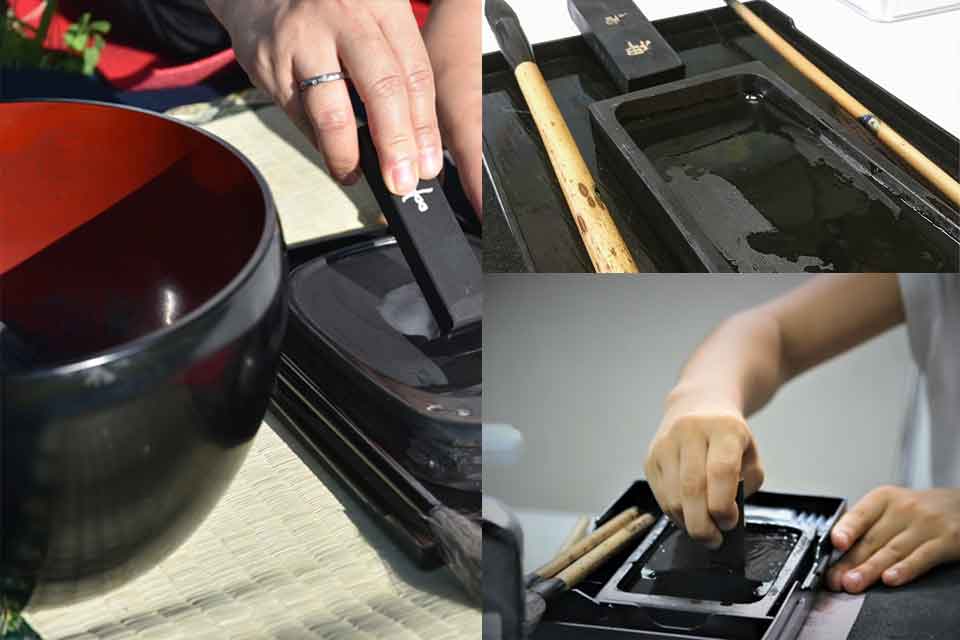
3) Master how to handle the brush as we practice making basic lines. It is important to hold the brush vertically and control the amount of ink.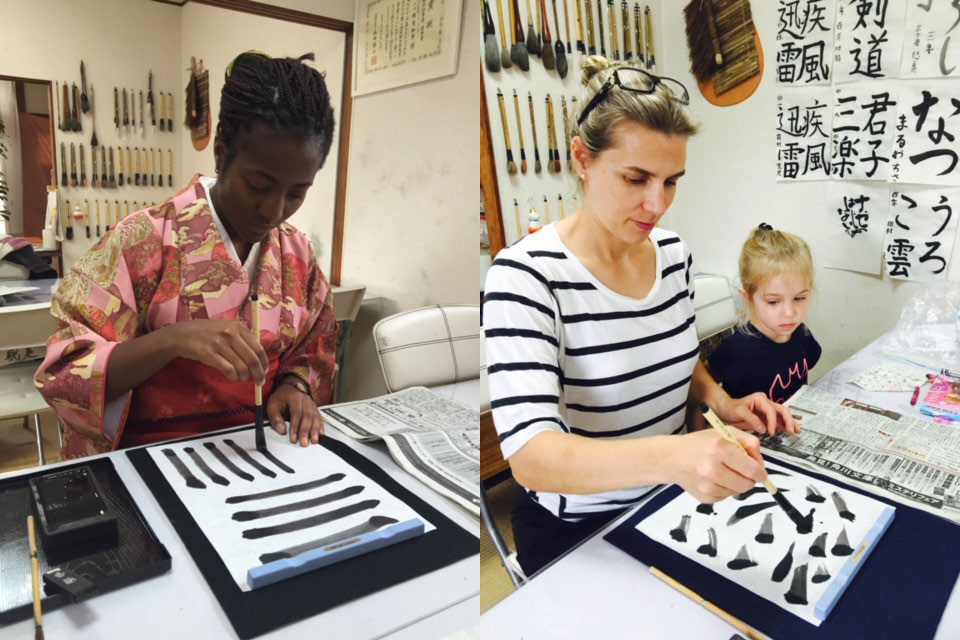
4) Let’s write some Kanji!
1) With your preferred hand, take the brush and hold it vertically.
2) With your other hand, hold down the washi paper.
3) Pay attention to where to place powerful strokes and where to carry the line through. Think of how to balance the characters, how to handle the brush, and the shade of the ink.
Practice about 10 different Kanji characters (requests accepted) and then focus on practicing your favorite characters to write for your final work. At this time, also practice writing your name in Japanese with a little brush.
5) Let’s practice various works, such as a mini scroll and shikishi board, sensu, and hanko.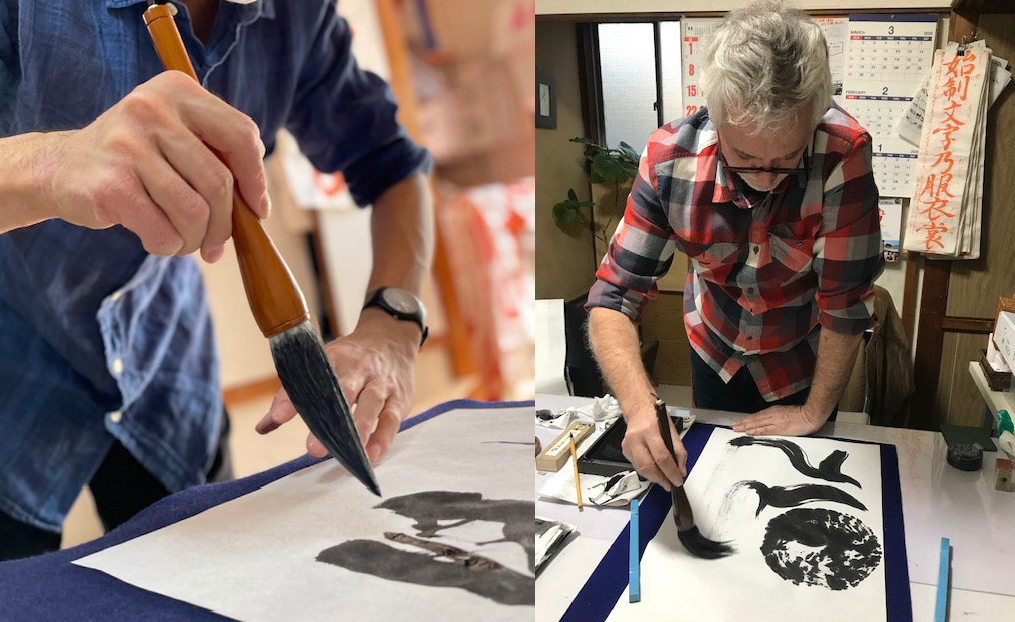
6) Choose a beautiful expression, such as “花鳥風月” (ka chō fū getsu, flower bird wind moon).
First, practice by using a basic brush and then move on to using a larger brush suitable for thick lines in your work.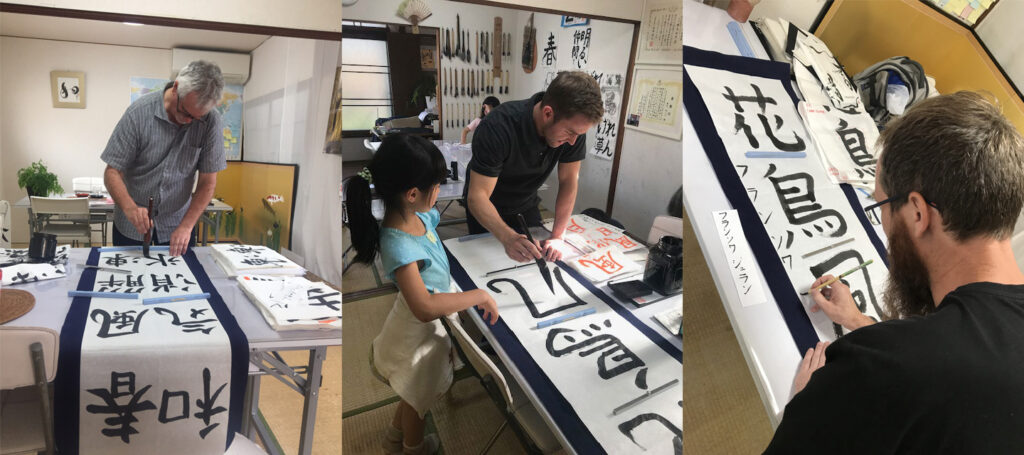
7) Now let’s try to write on a large scroll.
Mounted in the traditional style, hanging scrolls are even more beautiful. Please decorate your home with it and enjoy it for many years to come.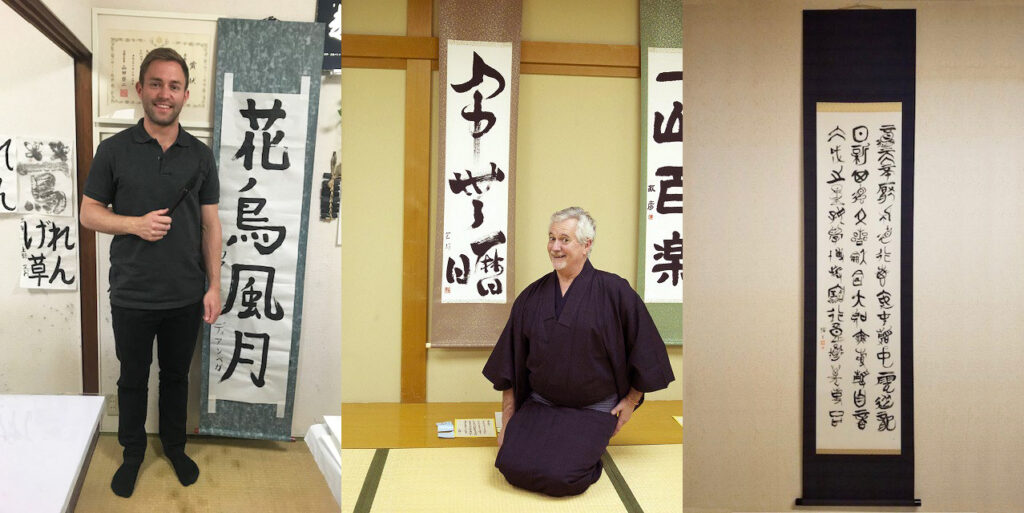
Scrolls and shikishi are compact and do not take up much space, making them easy to pack.
Please email to discuss your schedule.
If you have any questions or concerns, please feel free to email and I’ll do my best to help!
Inkyoto7@gmail.com

